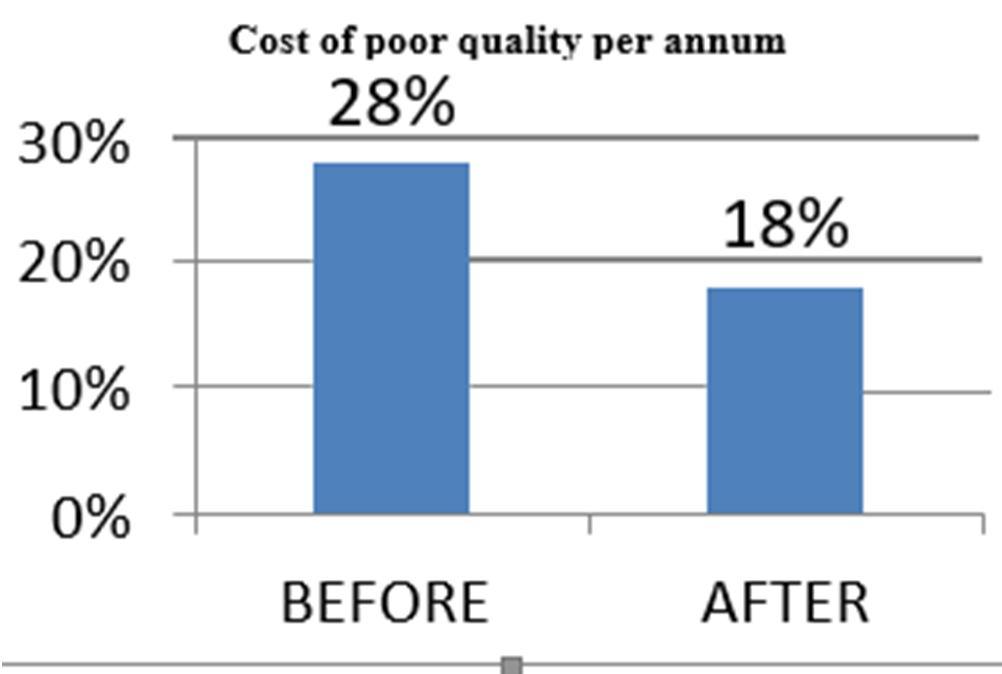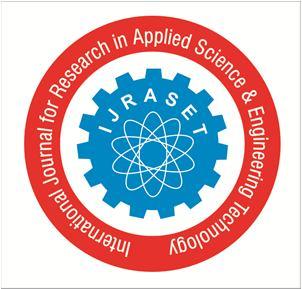
2 minute read
International Journal for Research in Applied Science & Engineering Technology (IJRASET)
from Quality Improvement of Oil and Fuel Leakage in Diesel Engine by using Semi Automatic Setup
by IJRASET

ISSN: 2321-9653; IC Value: 45.98; SJ Impact Factor: 7.538
Advertisement
Volume 11 Issue III Mar 2023- Available at www.ijraset.com
In 110 minutes 3 engines are tested but due to rejection of engine there is loss of time. Operator tests 12 engines daily on each test bed. If engine is rejected due to leakage there is loss of one engine. Operator will not consider this engine as rejected and we have to test again he will test the engine as a new. Instead of testing 13 engines he will test only his target engines so loss is there. Real cycle time for testing of engine in testing department is 40 minutes. But, due to leakage problem it becomes 110 Minutes.
ISSN: 2321-9653; IC Value: 45.98; SJ Impact Factor: 7.538

Volume 11 Issue III Mar 2023- Available at www.ijraset.com
X. DEFECTS BEFORE AND AFTER SETUP IN DECEMBER 2022
XI. PARTS PER MILLION ANALYSES BEFORE AND AFTER SET UP -DECEMBER
XII. SET UP IMPACT
This criterion describes the main goal of this project that was to reduce the problems at PDI Line due to Engine Quality Issue and to improve the sigma level. After calculation Sigma level was found to be improved considerably and Quality improvement in PPM for Engine Quality Defect = 1351ppm from 16,217ppm in month march 2016. It is clear that the setup is more profitable.
ISSN: 2321-9653; IC Value: 45.98; SJ Impact Factor: 7.538

Volume 11 Issue III Mar 2023- Available at www.ijraset.com
XIII. COST PER BENEFIT IMPACT
Cost of poor quality (COPQ) has been significantly reduced from 28% to 18% of sale that means if company is supplying 1000 engines to the customer and apart from that 5 engines are rejected due to leakage complaints this loss is reduced by setup which will provide 100% leakage free engines to the customers.
XIV. CUSTOMER SATISFACTION IMPACT
Engine assembly/Testing line Department was able to assemble/test more defect free engines than the earlierperiod. Problem at PDI engine line due to Defects related to Engine quality issues reduce from Avg. 16217 PPM to 1351 PPM per month. The benefit is that there are no single defectsreported at Buy off testing stage after implementation of action plan.
XV. OVERALL ANALYSIS
Ho-Defectives proportion before solution implementation =Defectives proportion after solution implementation
Ha-Defectives proportion before solution implementation >Defectives proportion after solution implementation
Table No.5- Overall Analysis
Difference = p (1) - p (2)Estimate for difference: 0.01491, 95% lower bound for difference: 0.00539415
Test for difference = 0 (vs. > 0): Z = 9.77 P-Value = 0.000Result: P value is <0.05, OR (Z at 0=9.77) > (Z at 0.05=1.645)
So, Ho is rejected.
It shows that after implementation of solutions on assembly line conveyor Engine manufacturing there is significant improvement by this set up of Oil & Fuel leakage.
XVI. CONCLUSION
1) Improvements in PQCDSM, 100% leak detection in engines. Due to this The tendency of operator/Engineer to work is increased, Customer satisfaction increased, Cost saving due to in-house manufacturing Rs. 6.5 Lac, Reduction in rework cost by Rs. 21,000/ engine.
2) Cost saving of 23, 10, 000/- rupees in one month as per theengine rejection due to leakage from PPM of March 2016. Time saving upto110 Minutes which was waste for rework ofengine.
3) Before the setup Parts per million was 16,217 and now it is1351 after the setup. Rejection of engines reduced from 120 nos. to 10 nos. and thus ppm is calculated it clears that setupis more profitable.



